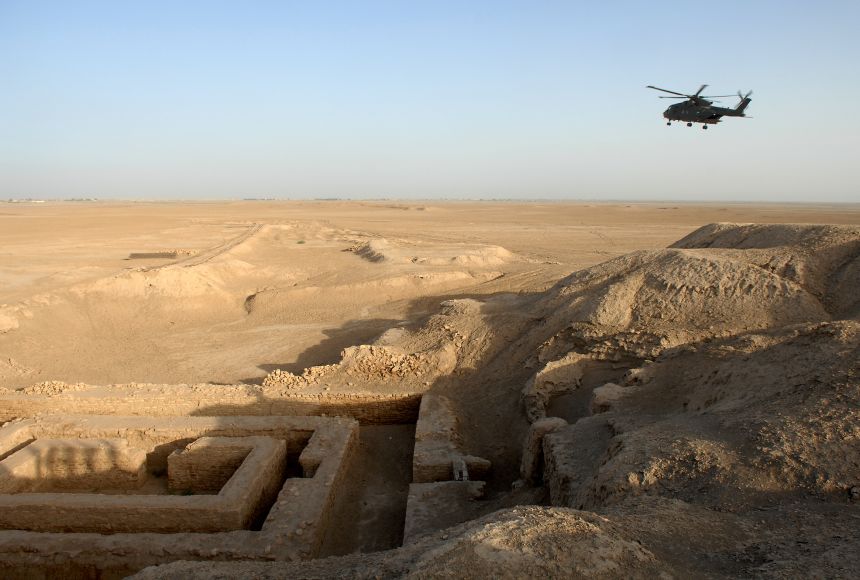The first cities appeared thousands of years ago. They were built in places where the land was good for farming, like Mesopotamia around 7500 B.C.E. Cities also formed along the Nile River in Egypt, the Indus River Valley on the Indian subcontinent, and the Huang (or Yellow) River in China.
As hunters and gatherers, people used to move from place to place. As farmers, in contrast, they settled into communities that were tied to the land. Nearby waterways provided a much-needed transportation system, making it possible for early farmers and city-dwellers to engage in trade.
For the next several thousands of years, cities continued to grow in number, size, and importance. Some cities that were once among the largest in the world, like the cities of Mesopotamia, no longer exist, and others have experienced a decline in population. Most of the world's cities, however, have continued to grow, and some are growing faster than ever before.
People Left Rural Areas for Big Cities
In the modern era, living in cities has become common. Until recent years, the vast majority of people lived in the countryside. In 1800, for instance, less than 10 percent of the world's population were city-dwellers. In the United States, less than 6 percent of people lived in cities. By 1900, however, this number had increased to about 40 percent.
One of the main reasons for the growth of cities was the Industrial Revolution, which began in England toward the middle of the 18th century and then spread to the United States and other parts of Europe. During the Industrial Revolution, thousands of factories were built in cities, creating a demand for workers there. Over the next century, millions of people in the United States and England moved from farms to cities. As factories were built in more and more parts of the world, more cities grew.Thanks in part to the Industrial Revolution, London, England, grew from a population of one million in 1800 to over six million a decade later. Growth continued for the next two centuries. By 1950, the metropoitan area of New York City, New York, U.S., became the largest city in the world, with a population of 12.5 million.
The growth of cities has also been driven by new technologies. The invention of steel, a new and extremely strong kind of metal, gave birth to skyscrapers, high-rise buildings with 40 floors or more. Such buildings would not have been useable without the invention of the elevator, which carried people up to their apartments and offices in the sky. Technological changes like these allowed many more people to live and work within a city's limits.
The Rise of the Megacity
Experts say that over half of the world's population today lives in cities and that around two-thirds of people will be living in cities by 2050. Much of this growth will be the result of families in cities having more children. It will also be driven by the continued migration of people from rural areas to cities.
All this growth has led to a new type of city: the megacity, which is defined as having a population of 10 million or more. New York City and Tokyo, Japan became the world's first megacities in the 1950s. By 2018, there were 37 megacities across the globe. While the largest cities of the Industrial Revolution existed in North America and Europe, today it is cities in Asia and Africa that are growing the fastest due to industrialization. As of 2019, Tokyo, with more than 37 million residents in its metropolitan area, is the world's largest city. Delhi, in India, has almost 30 million residents. Shanghai, China; Mexico City, Mexico; and São Paulo, Brazil, all have metropolitan area populations well over 20 million.
Some Cities Struggle to Provide Services
The United Nations has predicted that there will be 41 megacities by the year 2030. India, which already has five cities with metropolitan areas with over 10 million residents, is expected to have seven by 2030. Some megacities may be in places that surprise you, such as Kinshasa, the capital of the Democratic Republic of the Congo. Already a megacity with a population of 11.6 million, Kinshasa is growing so quickly that it may soon outgrow some of the world's largest cities.
Like cities in England and North America during the industrial era, many cities in Africa and Asia are struggling to provide services to their rapidly growing populations. Lagos, Nigeria, the largest city in Africa, is home to 12.6 million people. About two-thirds of them live in slums, overcrowded neighborhoods where people live in poor and dangerous conditions. The rise of slums is one of the downsides of the speed with which cities have grown. Nevertheless, the population in the world's megacities continues to grow, and will likely keep growing for years to come.
